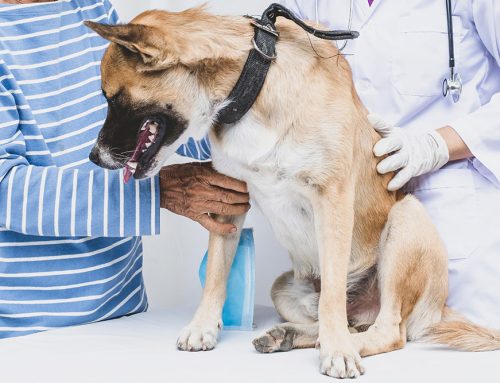Did you know that pancreatitis, or inflammation of the pancreas, is a common yet serious condition in pets? This vital organ, located near the stomach, plays a key role in both digestion and regulating blood sugar. But when it becomes inflamed, it can trigger a cascade of painful and potentially life-threatening symptoms. Pet owners in Salem, Ohio, can protect their furry friends by understanding pancreatitis, knowing the signs, and seeking veterinary care early. Here at Adamson Veterinary Services, we are committed to helping pet families recognize and manage this condition effectively.
What Exactly is Pancreatitis?
Pancreatitis in pets refers to inflammation within the pancreas, an organ that releases enzymes to aid digestion. Normally, these enzymes only activate once they reach the intestines. However, in pancreatitis, the enzymes activate too soon, causing them to start breaking down the pancreas itself. This self-digestion process can lead to pain, swelling, and potentially severe complications if left untreated.
Common Causes of Pancreatitis in Pets
Understanding what causes pancreatitis can help pet owners take preventative measures. Here are some of the common triggers:
- Dietary indiscretion: Eating fatty or unusual foods (think of the leftover table scraps) is a top cause.
- High-fat diets: Diets that are consistently high in fat can put excess strain on the pancreas.
- Certain medications: Some medicines can have pancreatitis as a side effect, so always consult your veterinarian before introducing new medications.
Knowing these causes can go a long way in helping you prevent this painful condition from impacting your pet’s health.
Recognizing the Symptoms of Pancreatitis
So, what does pancreatitis look like? The symptoms can vary, but there are key signs to watch for in both dogs and cats:
- Vomiting – Often the first symptom
- Abdominal pain – Pets may hunch their backs or react when touched
- Lethargy – A sudden lack of energy
- Diarrhea – Watery stools can be a sign of digestive issues
- Loss of appetite – A noticeable disinterest in food
- Fever – An elevated temperature may indicate an inflammatory response
If you notice any combination of these signs, it’s essential to reach out to your veterinarian as soon as possible. Early diagnosis can make a significant difference in the recovery process.
Preventing Pancreatitis in Pets
Prevention is always preferable to treatment. Here are practical steps to reduce the risk of pancreatitis in your pets:
- Monitor diet: Keep meals consistent, nutritionally balanced, and low in fat.
- Avoid fatty foods: Especially during holiday gatherings or family meals, keep high-fat foods like turkey skin or gravy out of reach.
- Regular feeding schedules: Consistency helps regulate your pet’s digestion.
Regular wellness exams at Adamson Veterinary Services are also vital. These routine check-ups can catch any early signs of pancreatitis or other health issues before they escalate, providing peace of mind and better health for your pet.
Is Your Pet’s Breed at Higher Risk?
Certain breeds are predisposed to pancreatitis. Among dogs, Miniature Schnauzers, Yorkshire Terriers, and Cocker Spaniels show a higher incidence of this condition. If you have a pet from one of these breeds, being proactive with their diet and routine exams is crucial to managing their pancreatitis risk.
The Role of Veterinary Care in Managing Pancreatitis

If your pet is diagnosed with pancreatitis, you can rely on Adamson Veterinary Services for comprehensive support. Our clinic offers advanced diagnostic tools, including blood tests and ultrasound, to confirm the diagnosis. Treatment typically involves:
- Fluid therapy: Replenishes fluids lost through vomiting or diarrhea
- Pain management: Pain-relieving medications help make your pet comfortable
- Dietary adjustments: Switching to a low-fat, high-digestibility diet can reduce pancreatic strain
- Anti-nausea medications: These help control vomiting, a common symptom
With a dedicated veterinary team by your side, your pet has the best chance for a smooth recovery and long-term health.
Managing Pancreatitis Long-Term: Diet and Check-Ups
Once a pet has recovered from an episode of pancreatitis, managing their diet becomes especially important to prevent future flare-ups. Feeding a low-fat, high-quality diet and maintaining a healthy weight are essential steps. Additionally, scheduling regular check-ups can help monitor their pancreatic health over time.
To maintain your pet’s overall health, consistent care and attention are key. At Adamson Veterinary Services, our goal is to help you support your pet with a tailored health plan that accounts for their unique needs and helps you avoid future pancreatitis episodes.
Conclusion
Understanding and managing pancreatitis in pets is essential for any caring pet owner. Recognizing symptoms early, providing prompt veterinary care, and practicing preventive measures can significantly improve your pet’s quality of life. At Adamson Veterinary Services, we’re here to guide you through every step, from diagnosis to long-term management, to ensure your pet stays happy and healthy.
If you have concerns about pancreatitis or other health issues, don’t hesitate to contact us. Our experienced team is ready to support you with the highest standard of care for your pet.
Educating yourself about conditions like pancreatitis helps you take proactive steps toward a joyful, healthy life for your pet. And remember, when it comes to health, prevention is just as essential as treatment.







Leave A Comment